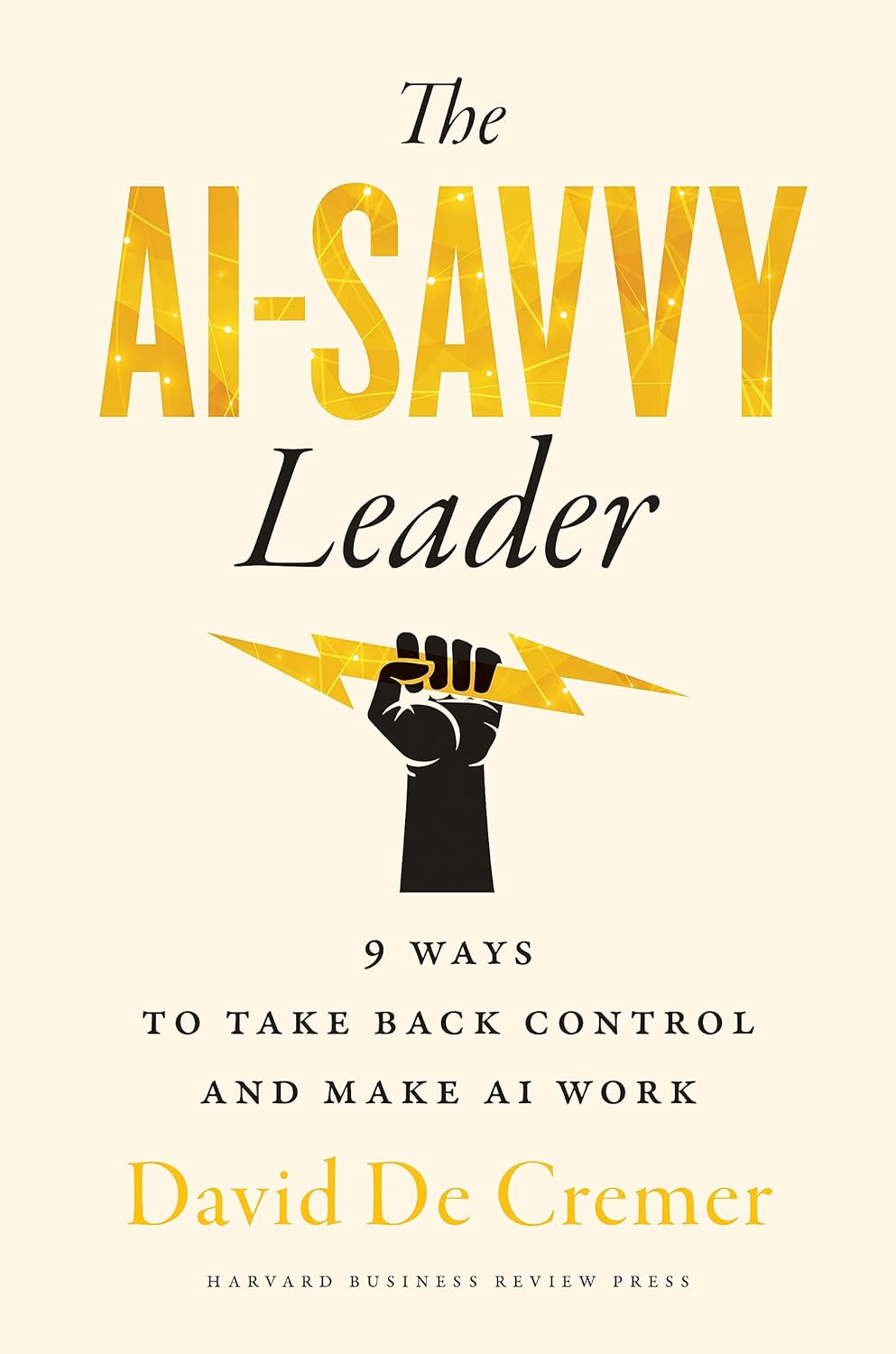The AI-Savvy Leaders
9 ways to take back control and make AI work


David De Cremer is Dean of the D’Amore-McKim School of Business at Northeastern University in Boston. Prior to which he was Founder and Director of the Centre for AI Technology on Humankind at NUS Singapore, and was resident faculty and KPMG Chair of Management Studies at the Judge School of Business at the University of Cambridge, UK until 2018. He is the NUS representative for the scientific committee at AI Singapore, with a focus on AI governance. He is also a member of EY’s advisory board and guiding the development of their AI lab.
Big Data, Machine Learning now Artificial Intelligence – the incremental waves of the new abilities of computing power keep surging forward. So far the bang has been slightly less than the hype – but with each new cycle of this progress, the impact is slightly greater. This is largely due to the fact that the ease of using each new iteration is commensurately simpler – and so more people, more businesses, are able to use it. Big Data was really for tech-wizards and their well resourced start-ups to play with, ChatGPT and its competitors, and there are an ever increasing number of those, is very simple to use, and anyone with access to the internet can do so.
The results, so far, are not earth-shattering, but they are nonetheless impressive and give clear indication as to what will be achieved in fairly short time periods.
The flip-side of this story is that while AI, and before it Big Data and Machine Learning, and to a lesser extent virtual world technologies, will transform our worlds, and when it does happen it will probably happen very quickly – so far the change has been peripheral while the investment has been extravagant. The business world continues to splurge cash on AI, few companies other than the chip-makers, Nvidia at the forefront, are reaping the benefits yet.
This book from David De Cremer suggests that, much like the earlier waves of digital transformation, successful implementation of AI will only occur when the organizations and the leaders of those organizations are able to weave the benefits of AI across the whole business strategy, rather than as an add-on. He also sees that AI is different to the previous waves – it will affect business much more profoundly, and it will affect everyone.
De Cremer opens his book with the crux of the problem – a story of how an organization invests huge sums in AI to make its processes leaner and more efficient and a year on pull-the-plug, as little efficiency is being realized while the cash continues to race into a blackhole.
The reason he posits – and the question he regularly asks of executive boards – ‘where were the business leaders in this AI adoption project?’. They never fully got their heads around what this ‘new employee – AI’ could do, where it would fit in – and when questions needed answering around this issue, they deferred to the techies, and not the business-oriented executives. The leadership were side-lining themselves.
With leadership not being where it needed to be, the essential ingredients for a successful digital transformation project – namely, empowering and motivating people, providing guidance, and instilling a work culture where people learn from their failures – were not delivered.
De Cremer works closely with companies and researches the sector and sees a staggering rate of failure. $6.8bn invested in AI projects in 2023, with an 87% failing to reach their objectives. As always with technology, the issue is not the tech part, but the human part. Executives see that AI is ‘a big thing’ and they should ‘act fast’ not to get left behind, but it is hugely complex and they don’t really understand it – these two forces ‘urgency’ vs ‘slight knowledge’ create a tension, that means they stand back and let others take the lead.
As with all complex issues, us poor humans need to distil things down to simple, clear paradigms – and De Cremer does just this. His work suggests that the AI world fall into two distinct camps:
Perspective 1 – AI is an increasingly cheap way to replace people and achieve new levels of productivity and efficiency
Perspective 2 – It’s a powerful tool to augment – but not replace – human intelligence and unlock more innovation and creativity in workers.
Perspective 1 is very much where we have been and many companies still are – it is 19th and 20th century business thinking, that the bottom line and efficiency is the only thing that matters. That we can use the logical deduction of AI to determine how to use AI further. This way chaos lies though. The author believes the AI-Savvy leader must view the world through Perspective 2 – and anyone who has used ChatGPT will probably agree – it can augment creativity, and speed it along, but it still requires human judgement and evaluation to make it work well
Ultimately, humans still need humans to operate effectively. It is the secret sauce of humanity, the junk code that makes us human, that is needed. And that is what good leaders can leverage.
The book that follows this opening insight is closely focused on how the main and familiar elements of leadership can be applied and directed specifically to AI transformation. The chapter headings are all central elements of good leadership: Learning; Purpose; Communication; Emotional Intelligence and so on.
An elegant example of this is in the chapter on Empathy: Using a Human-centred Approach to AI Adoption. De Cremer recounts a story with a CTO who employs an AI algorithm to assess the quality of marketing reports, and by association their authors. The eventual outcome is that the relentless monitoring and assessing, allied to the inevitable variation in quality that employees delivered over a time period, ground them down. Absenteeism and staff turnover increased. De Cremer points out that humans are not designed to be relentlessly consistent; what he terms ‘reflective procrastination’ is a human habit that occurs frequently, it is creative and allows different perspectives to be viewed. While it upsets the consistency metrics, it can boost morale, insights and creativity. In the long-run it is highly valuable, but in the short-term seems inefficient. The code did not allow for that – but good leaders understand it. With the code suitable tweaked for the human condition things picked-up again. The book is filled with these little insights.
De Cremer covers these human issues that too often derail AI implementation projects: tackling the isolation that AI use can create; the frequency of communicating about AI development to reassure workers and dispel fears of impending unemployment; expressing your vision in human, not technical or efficiency terms – sell the benefits; the imperative of having to stay current in your awareness of AI developments…
The AI-Savvy Leader’s objective is to deliver a more efficient organization which uses AI effectively. That will still be an organization run and staffed by humans – and it will be those humans that determine whether the AI is used effectively and productively or not. The AI-Savvy Leader – like all leaders – therefore needs to focus on the human reactions to the new technology and not the other way around.

Title: The AI-Savvy Leader: 9 Ways to Take Back Control and Make AI Work
Author/s Name/s: David De Cremer
Publisher: Harvard Business Review Press
ISBN: 978-1-647-826-23-9
Publishing Date: June, 2024
Number of Pages: 256